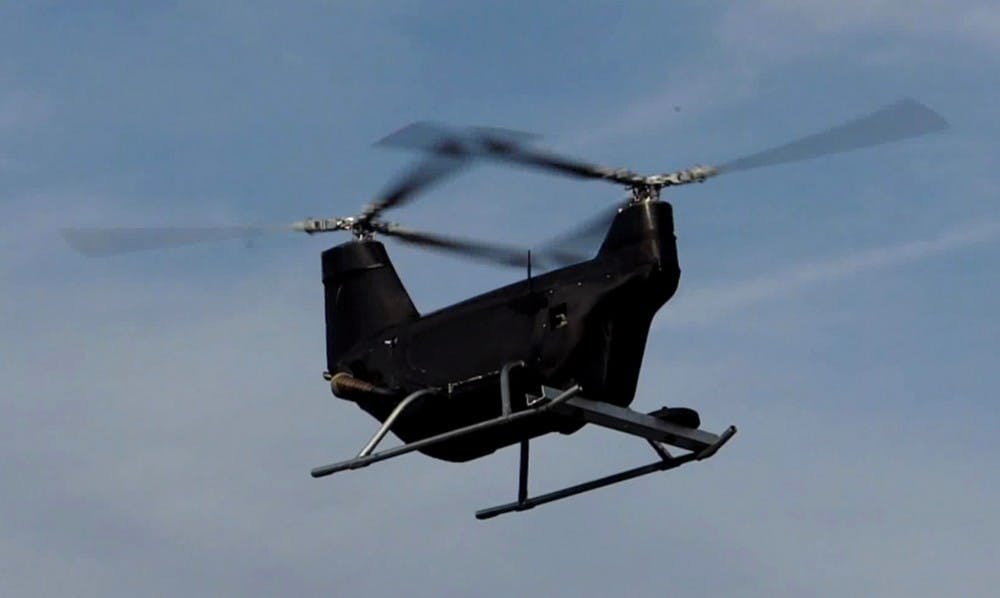
Autonomous Aerial Vehicles are among some of the projects at Penn that receive support and funding from the U.S. military.
More than a fifth of the School of Engineering and Applied Science’s research budget comes from the Department of Defense.
According to SEAS Communications Director Joan Gocke, the Engineering School received about $11 million — or 21 percent of the school’s total research budget — in Department of Defense funding for the 2011 fiscal year.
From mapping an unknown terrain to disposing of dangerous explosive devices, an array of military-related projects are currently underway.
Maxim Likhachev, an adjunct professor in the Computer and Information Science Department, is currently involved in one such project.
Likhachev’s research involves developing Autonomous Aerial Vehicles in collaboration with Penn’s General Robotics, Automation, Sensing and Perception Laboratory and Dragonfly Pictures, Inc., a local company that designs and builds unmanned helicopters.
The project is funded entirely through the Department of Defense.
By creating software that will enable helicopters to fly on their own, Likhachev said he is creating opportunities for the military to patrol and fly along enemy borders without the risks that come with having a pilot in the cockpit.
The Department of Defense is “interested in having these helicopters deliver medical supplies, extract wounded soldiers or identify contaminated areas,” he said. He explained that this is due to the usefulness of the helicopters’ self-capability to fly in and out of dangerous areas.
According to Likhachev, the helicopters are able to analyze different terrain by using laser sensors. Since perception can be a major problem in autonomous flight, Likhachev said it is necessary to analyze this terrain in order to determine a good landing site.
However, the surveillance function of Autonomous Aerial Vehicles is not the only use that a robot can have on the military front.
As part of a 2010 competition funded by the Department of Defense, Engineering professor Daniel Lee was involved in developing a robot that had to be part autonomous and able to perform a search and reconnaissance mission.
For the competition, Lee had to make a team of land robots that could scan a large area as quickly as possible while making a map of an unknown environment based on its sensors. The robots also had to be able to identify color-coded objects — which marked danger — and relay that information back to an operator.
“The robots had to be smart enough to explore and most of the time act on their own, and smart enough to figure out if they’re in trouble and communicate to the human operator for guidance,” Lee said.
According to first-year Engineering graduate student Praveen Pitchai, Lee’s work in the competition has set a basis at Penn for inventions that enable a robot to detect objects and autonomously navigate.
Recently, Pitchai has received funding from a number of different organizations, including the National Aeronautics and Space Administration, to develop a tele-operated robot that is able to identify specific objects according to color and pick them up.
Pitchai said this kind of technology is used in surveillance and bomb disposal robots like those developed by the company iRobot.
“Bomb disposal robots are completely tele-operated,” he said. “It’s like playing with a remote controlled car, but these cars are for bomb disposal.”
Despite the possible misconceptions on military applications in research at Penn, Lee said that most technology can be used in an open, productive way.
“It’s good to keep it in the open, allow people to discuss the implications, and think about the ethical requirements of any research,” he said.
Lee cited the Internet and global positioning systems as examples of research that received military funding and have benefitted humanity.
Ultimately, he said, “Certain technology can be used in a good way or bad way. Any technology has a lot of potential for good.”
The Daily Pennsylvanian is an independent, student-run newspaper. Please consider making a donation to support the coverage that shapes the University. Your generosity ensures a future of strong journalism at Penn.
DonatePlease note All comments are eligible for publication in The Daily Pennsylvanian.





